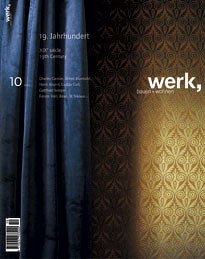Editorial
Editorial
When, in the early 1970s, the first dissertations on 19th century architecture were written in Switzerland, many people active in an academic environment and concerned with prominent art-historical themes feared for the good reputation of the discipline. The fact that young graduate students studying for their doctorates were embarking, with scientific seriousness, on research into a branch of architecture that was generally regarded as an uninspired recycling of motifs of past epochs seemed like a provocation. During those years, the Gesellschaft fŸr Schweizerische Kunstgeschichte (Association for Swiss Art History) began its internationally unique pioneer work on the inventory of new Swiss architecture from 1850-1920 - an indispensable instrument that made an important contribution to the rehabilitation of the neglected legacy of our great-grandfathers, both as a reference book and a reader. Since then, architectural-historical research on the architecture of the 19th century has experienced a boom. Thus it is all more surprising that there is generally speaking so little enthusiasm for 19th century architecture among architects. This may have something to do with the stubbornness with which the negative images that modern architecture has disseminated about the 19th century still persist. And it may be due simply due to ignorance, which make architects, newly awakened from their reductional paralysis and embroiled in their quest for atmospheric and dramaturgical variety, overlook this rich architectural fund. On the occasion of the „Semper year“, this issue of werk, bauen + wohnen looks back, from various points of view, over the opulent epoch that produced so much material variety, magnificence, dramatics and atmosphere. Charles Garnier's fresh and self-critical commentary on his new opera house in Paris is a piece of first-hand contemporary architectural criticism. Three more modest but no less typical buildings in Switzerland - a city administration building and a villa in Zurich and a school in Geneva - are the subjects of empathetic restoration; and Martin Boesch, Arthur RŸegg and Catherine Courtiau write about personal discoveries. Gottfried Semper himself is also present: Hermann Hipp recalls his problematic dealings with the city of his birth; and Christian Sumi's article in which he analyses Semper's town planning forum projects for Dresden, Zurich and Vienna on he example of new models follow on directly from the Semper exhibition held in Zurich from mid-November. All these are but fragments of the rich palette of this era, but ones that will, we think, engender an appetite for more. The Editors
